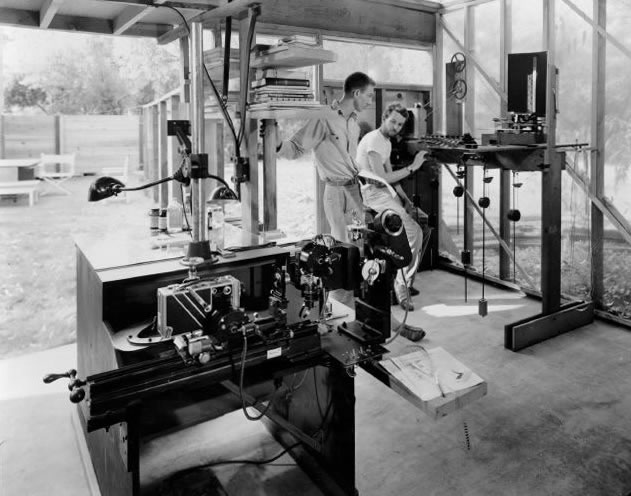-
Notifications
You must be signed in to change notification settings - Fork 23
John & James Whitney
Pioneers of computer graphics, James and John Whitney developed a variety of innovative practices in animation. Working with airbrush stencils, optical printing, computer-generated graphics, and then simply using light the brothers created abstract-art films in their California studio.
In the late 1950's John created an analog computer from decommissioned Second World War antiaircraft devices, affording him and James the necessary control to film precise geometric shapes, patterns, and movement. By the 1970s, the two brothers had ventured off in different cinematic directions: John worked with computer programmers to perfect the code behind the movement of animation graphics, while James created highly mystical abstract films.
- Digital Harmony: The Life of John Whitney, Computer Animation Pioneer
- "Fifty Years of Composing Computer Music and Graphics: How Time's New Solid-State Tractability Has Changed Audio-Visual Perspectives" by John Whitney, Sr.
- "Digital Harmony" this is a chapter from John Whitney's book 'Structured motion begets emotion'
- Articulated Light, the emergence of Abstract Film in America by: John Whitney
-
"it was only in the mid 50’s when i began to see these devices that it became clear that there were a great possibilities 4 developing animation machines that would manipulate design in ways that would never be done by hand" from 'John Whitney demonstrates his analog computer'
-
"My computer program is like a piano. I could continue to use it creatively all my life." — John Whitney
- Screening room - video
- Opening credits for Vertigo (designed by Saul Bass) 1958
- "Catalog" reel 1961
- Matrix 1971
- Permutations 1966
- Variations on a circle 1941-42
- Laplis 1966

